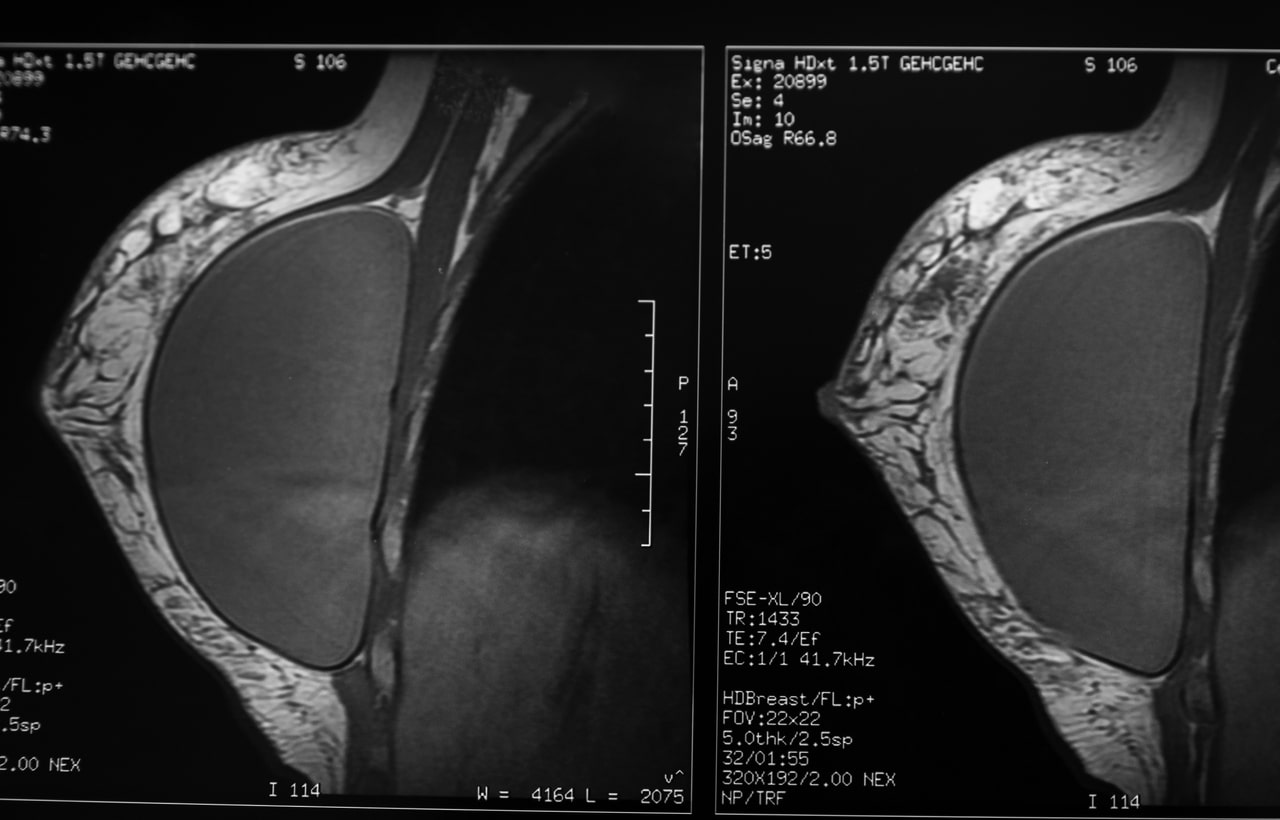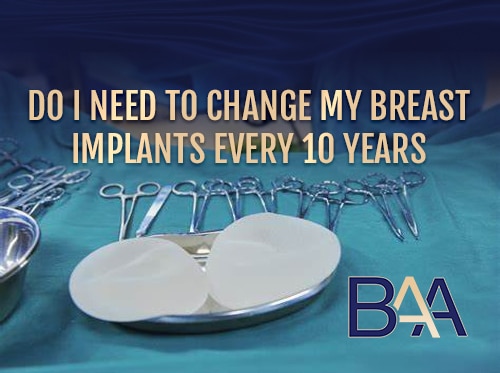Breast Implant Flipped or Rotated
Breast implants have gained global acceptance for cosmetic and therapeutic procedures. Implants are associated with numerous advantages, sometimes making surgeons and patients overlook the complications that may arise after breast surgery.
Flipped breast implants are one of the post-surgical breast complications. Breast implant flipped or rotated occurs in both saline-filled and silicone implants when the breast implant changes orientation, altering its original position. Flipped breast implants look asymmetrical, misshapen, or distorted, causing noticeable breast changes.
If you’re planning to undergo breast augmentation, you may be worried about what to do in case of a flipped breast implant. Read on to discover how to handle a flipped implant, breast implant flip causes, and prevention measures.
What is Breast Implant Flipping / Rotation
During breast surgery, the specialist surgeon will create a breast pocket and inserts either saline or silicone breast implants. The implant is supposed to maintain the original placement position, giving the breast the desired aesthetics.
Breast implant flipping, or rotation, is a post-surgery complication where both or one of the breast implants change their position inside the breast pocket. The implant can change position such that the back faces the front (180 degrees rotation), or the top becomes the bottom. Breast implant flipping is also called breast implant malrotation.
Flipped breast implant distorts the breast shape and volume, causing discomfort. The complication is one of the common factors leading to breast implant revision surgery (mammoplasty).
What Are the Causes of Breast Implant Flipping or Rotation
Flipped breast implants after breast augmentation surgery can result from various factors. Some of these causes include:
Type of Breast Implant
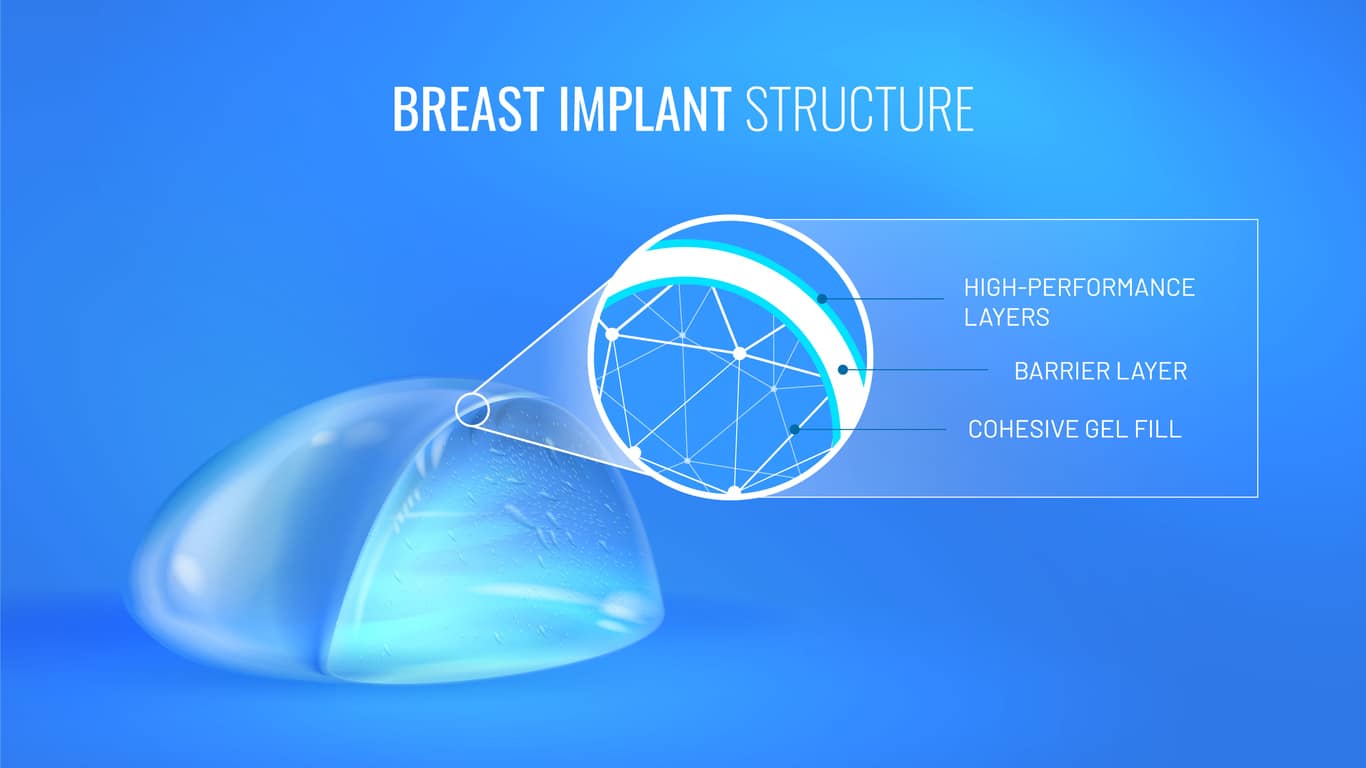 The main types of breast implants are saline and silicone implants. In addition to silicone or saline-filled, implants can be round, teardrop shaped, smooth, or textured.
The main types of breast implants are saline and silicone implants. In addition to silicone or saline-filled, implants can be round, teardrop shaped, smooth, or textured.
Round implants have a smooth surface, increasing the implant movement inside the breast pocket and the likelihood of implant rotation. However, this has no consequence since it will not change the breast shape. Using round implants is beneficial because it eliminates the issue of implant rotation. In addition, newer round implants utilise adhesive surface technology, allowing the implant to fix onto the surrounding scar tissue.
Teardrop-shaped implants, called anatomical implants, cause more noticeable breast changes when they flip. This is because of their asymmetrical front shape. Implant rotation will cause the bigger bottom part of the implant to move to the top, altering the overall breast projection and shape. Rotated anatomical breast implants are highly noticeable.
Textured breast implants have a reduced risk of breast implant flips because the rough surface allows the integration of the implant and the surrounding breast tissue. This reduces implant movement and rotation. However, textured implants can lead to inflammation of the surrounding tissue. In addition, macro-texture breast implants pose a risk of BIA-ALCL, a rare type of cancer.
Capsular Contracture
After breast augmentation, the body reacts by forming capsular scar tissue around the implant. The scar tissue is soft and unnoticeable. However, there are instances when the scar tissue becomes thick and firm, resulting in capsular contracture. The thick and firm layer squeezes the breast implant, sometimes causing discomfort and chronic pain. The pressure on the breast implant may cause implant rotation.
Breast Trauma
 Exposing the breast implants to any trauma or stress after breast surgery can result in breast implant malrotation. Trauma can result from strenuous activity, sports, accidents, or any injury to the breast area. The breast implants can flip upside down or rotate from back to front. Breast trauma is the most common cause of flipped implants.
Exposing the breast implants to any trauma or stress after breast surgery can result in breast implant malrotation. Trauma can result from strenuous activity, sports, accidents, or any injury to the breast area. The breast implants can flip upside down or rotate from back to front. Breast trauma is the most common cause of flipped implants.
Large Breast Pocket
Sometimes, the surgeon may create a larger breast pocket than the breast implant size. A large breast pocket will allow the breast implant to flip or rotate. Large breast pockets can also result from location, age, gravity, and breast tissue factors like elasticity and thinning.
Insufficient Post Operative Rest
 Healing after breast augmentation can be long and tedious. This requires the patient to rest enough and avoid certain activities and clothing. Some women may be excited to show off their new breasts, forgetting the post-operative instructions. Lack of enough rest, avoidance of surgical bras, and failure to follow other post-operative instructions may prevent proper healing. The breast may lack proper integration with the surrounding tissue, causing breast implant flipping and rotation.
Healing after breast augmentation can be long and tedious. This requires the patient to rest enough and avoid certain activities and clothing. Some women may be excited to show off their new breasts, forgetting the post-operative instructions. Lack of enough rest, avoidance of surgical bras, and failure to follow other post-operative instructions may prevent proper healing. The breast may lack proper integration with the surrounding tissue, causing breast implant flipping and rotation.
Adherence to post-operative care should be key. To allow proper healing and integration, the patient should ensure sufficient rest, avoid straining the upper chest muscles, and have vigorous breast massages during the healing period.
Chest Deformity![]()
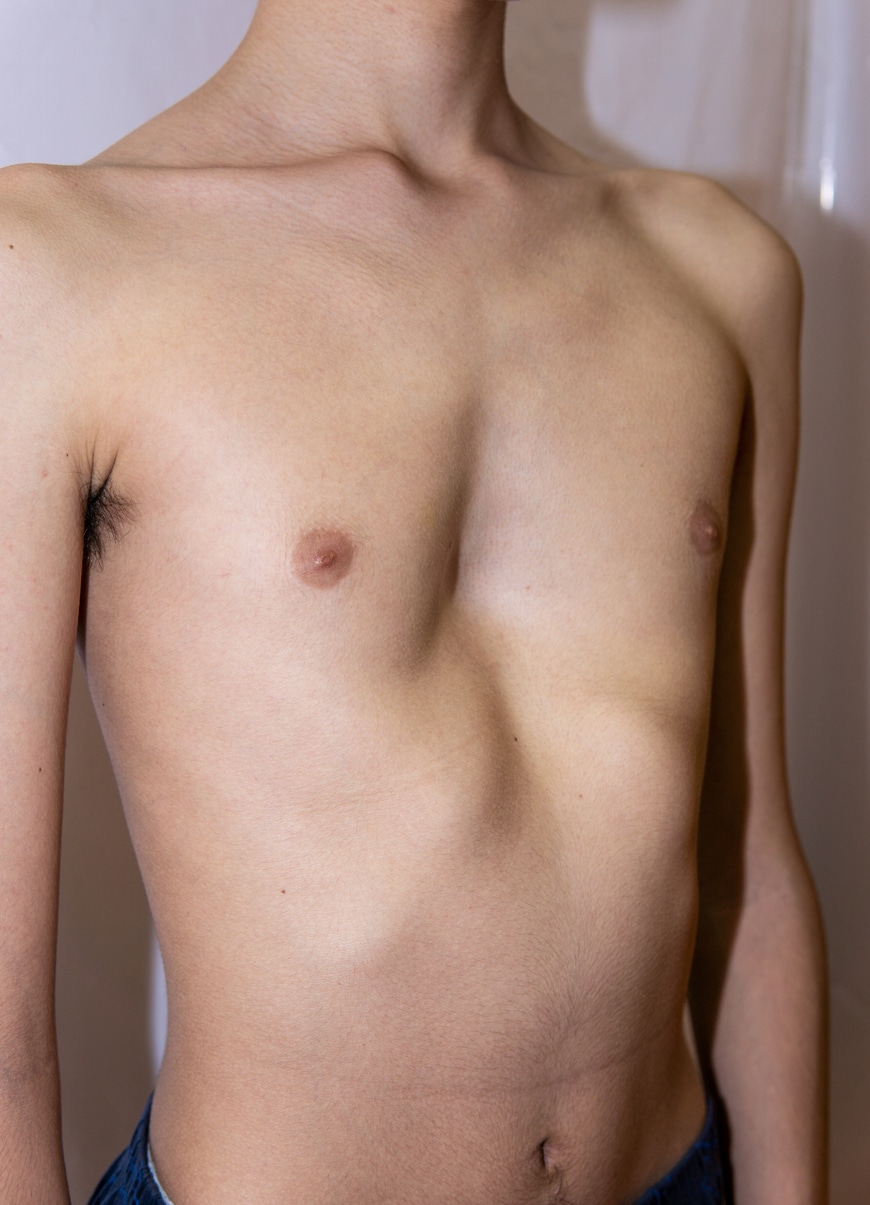
Patients with underlying chest wall deformity and asymmetry are more likely to experience implant flips.
How Do You Know if Your Breast Implant Has Flipped or Rotated
This varies with the implant type. Newer generation form-stable breast implants are noticeable in the case of implant rotation because they retain their shape irrespective of their orientation. These include anatomical implants.
Patients can notice a flipped implant by monitoring breast volume loss, shape, and feel changes. Flipped breast implants will be asymmetrical and look different when standing or lying compared to each other. The breast with flipped breast implant may also have a different texture.
Diagnosis of Breast Implant Rotation
Breast implant malrotation diagnosis uses a combination of physical examinations and imaging techniques. When a patient experiences breast rotation symptoms, the surgeon performs a physical examination to identify misshapen breasts or asymmetry.
In cases where it’s impossible to identify flipped breast implants through a physical examination, the surgeon may recommend imaging tests. These may include ultrasound or MRI (Magnetic Resonance Imaging). Ultrasound provides high-resolution imaging, making it possible to identify any breast implant changes. On the other hand, MRI provides detailed imaging of the implant and the surrounding breast tissue, increasing the ability to detect capsular contracture and breast implant malrotation.
With advancements in technology, some breast implants are equipped with radio frequency identification devices that allow precise detection of any implant position change.
Treatment of Breast Implant Rotation
Treatment of breast implants flipped or rotated may involve several approaches. The options include:
Manual Implant Re-flipping
The method is highly valuable if the patient experiences implant malrotation occasionally. It involves using the hands to manually shift the position of the implant to the original position. However, the patient should only attempt this approach with instructions from the surgeon. The re-flipping procedure involves first leaning forward to create additional breast pocket room. The next step is flipping the implant slowly from outside using the hands.
Breast Implant Revision Surgery
Revision surgery involves surgery to reposition the implant into the breast pocket. In cases where the breast pocket is big, it may involve tightening the large implant pocket. The surgeon may remove large implants and replace them with smaller ones if they cause malrotation. The procedure is preferred when the complication occurs frequently.
Explantation Surgery
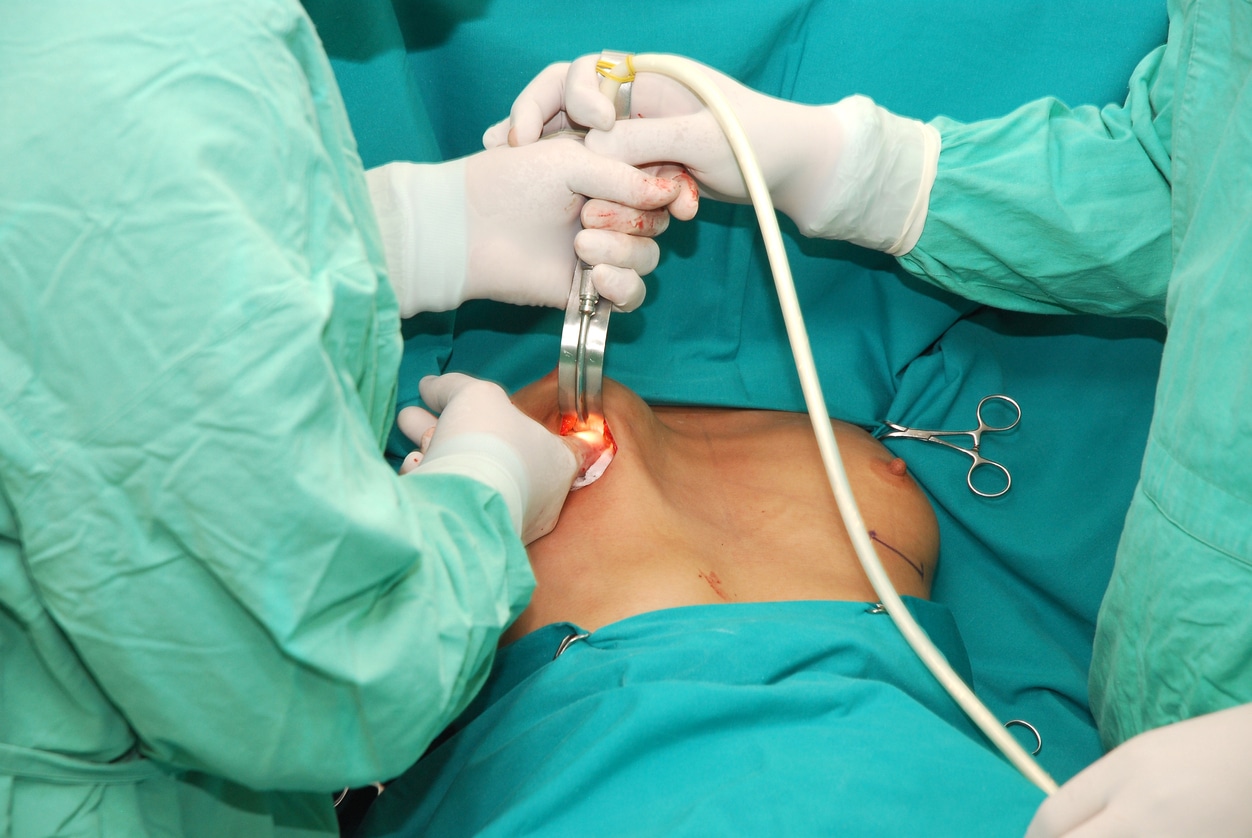 Frequent breast implant flipping can cause discomfort, lead to loss of breast aesthetics, and cause dissatisfaction to the patient. In such cases, the patients may consider a permanent treatment approach, implant removal without replacement.
Frequent breast implant flipping can cause discomfort, lead to loss of breast aesthetics, and cause dissatisfaction to the patient. In such cases, the patients may consider a permanent treatment approach, implant removal without replacement.
Prevention of Breast Implant Rotation
Preventing post-surgical breast implant complications should be a priority for both patients and surgeons. Below are some of the measures to prevent or reduce breast implant flipping.
Following Post Operative Instructions
 Post-operative care ensures proper implant healing. Following the instructions will also reduce breast implant complications like malrotation and capsular contracture. These instructions include wearing a surgical bra, avoiding activities that will cause breast trauma, and getting sufficient rest.
Post-operative care ensures proper implant healing. Following the instructions will also reduce breast implant complications like malrotation and capsular contracture. These instructions include wearing a surgical bra, avoiding activities that will cause breast trauma, and getting sufficient rest.
Using the Right Breast Implant Type
Some breast implants use high-quality technology to reduce complications like implant rotation and ensure the detection of any position change. These implants may be associated with increased costs but are worth it in the long run.
Dr. Beldholm suggests using round breast implants. Patients who prefer teardrop breast implants can get micro-textured breast implants. It’s important to note that macro-textured breast implants are not available anymore since they are highly linked to BIA-ALCL.
Regular Breast Screening
Patients should attend regular check-ups to monitor their breast condition. Regular screening allows earlier detection and treatment of complications. However, implant rotation can still occur despite using a qualified specialist surgeon and advanced techniques and breast implants.
Breast Implant Bottoming Out?
Bottoming out is an implant displacement complication occurring when the breast implant settles very low inside the breast pocket. This causes the breast to move below the breast fold crease and the nipples to sit higher, resulting in breast asymmetry. It may result from having a large breast implant compared to the patient’s structure. Bottoming out may lead to a large breast pocket, causing implant rotation.
What is the Likelihood of Implant Rotation After Breast Augmentation?
The risk of breast implant flipping is rare but not uncommon. However, it’s impossible to accurately determine the complication likelihood. The older generation implants make collecting data regarding implant flips challenging because the complication is less noticeable, unlike the newer form-stable implants. Researchers note that breast implants flipped with an approximate likelihood of 1-14% after breast surgery.
FAQs
Below are some frequently asked questions regarding breast implant rotation or flipping.
Does Implant Rotation Cause Pain?
Breast implant rotation is asymptomatic, causing little or no pain. However, a patient may experience chronic pain in cases where capsular contracture accompanies breast implant rotation. Capsular contracture leads to implant squeezing, which may result in pain. In addition, malposition due to breast trauma may result in pain and discomfort.
A patient should contact a doctor immediately if they experience unusual discomfort and pain after breast surgery.
Can I Reposition a Flipped Implant Without Medical Assistance?
You can reposition a flipped implant manually using your hands. However, you should ensure you have your surgeon’s instructions and the go-ahead. This is to prevent the complication from worsening. You should seek specialised medical assistance if implant malrotation occurs frequently.
Is Implant Flipping Dangerous?
Flipped breast implants are not a life-threatening condition. However, it affects breast aesthetics. Enhancing breast aesthetics is one of the common reasons why many women undergo breast augmentation.
How are Breast Implants Held in Place?
During recovery after breast surgery, a scar capsule develops around the implant. The capsule holds the breast implant in place, preventing implant movement, which can cause malrotation. The breast tissue ligaments also offer additional support to the implant.
Can all Breast Implant Types Flip?
Implant rotation can affect all implant types. Despite this, some breast implant types are more prone to rotation complications than others. However, technological advancement has reduced the implant malrotation rate by creating newer-generation implants with adhesive surface technology.
Can Breast Implants Still Rotate After Revision Surgery?
The surgeon uses revision surgery to correct implant flipping or rotation and restore breast aesthetics and symmetry. However, on rare occasions, implant rotation may reoccur. This may result from different reasons, including poor healing, among others. It’s important to note that the surgeon cannot guarantee 100% perfection in every surgical procedure.
References
- Ajdic, D., Zoghbi, Y., Gerth, D. J., Panthaki, Z. J., & Thaller, S. R. (2016a). The Relationship of Bacterial Biofilms and Capsular Contracture in Breast Implants. Aesthetic Surgery Journal, 36(3), 297–309.
- Jong, J., Gabriel, A., Trekell, M., Lawser, A. S., Heidel, E., Buchanan, D., & Chun, J. (2020). Cohesive Round Implants and the Risk of Implant Flipping. Plastic and Reconstructive Surgery. Global Open, 8(12), e3321.
- Ajdic, D., Zoghbi, Y., Gerth, D. J., Panthaki, Z. J., & Thaller, S. R. (2016b). The Relationship of Bacterial Biofilms and Capsular Contracture in Breast Implants. Aesthetic Surgery Journal, 36(3), 297–309.
- Administration, T. G. (2023a, February 7). BIA-ALCL: Information for health professionals. Therapeutic Goods Administration (TGA).
- Sieber, D. A., Stark, R. Y., Chase, S., Schafer, M., & Adams, W. M. (2017). Clinical Evaluation of Shaped Gel Breast Implant Rotation Using High-Resolution Ultrasound. Aesthetic Surgery Journal, 37(3), 290–296.
- Montemurro, P., Papas, A., & Hedén, P. (2017). Is Rotation a Concern with Anatomical Breast Implants? A Statistical Analysis of Factors Predisposing to Rotation. Plastic and Reconstructive Surgery, 139(6), 1367–1378.
